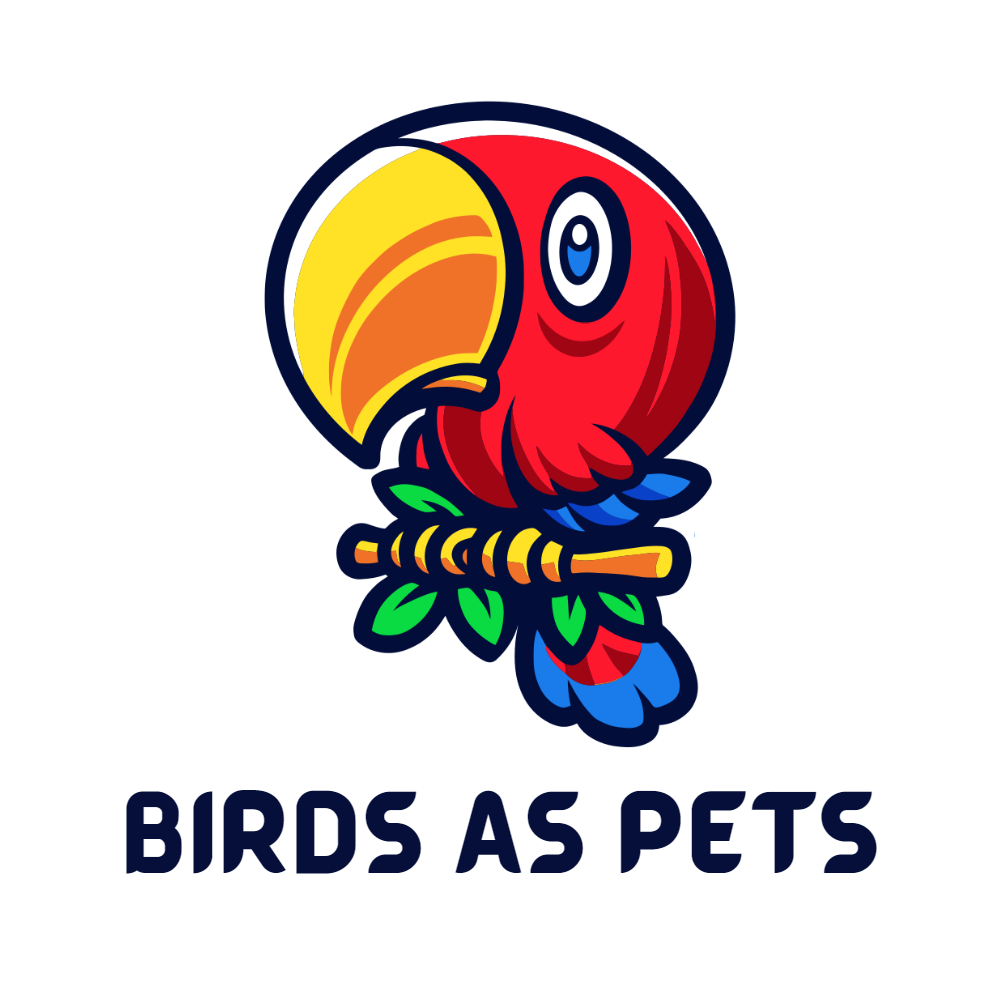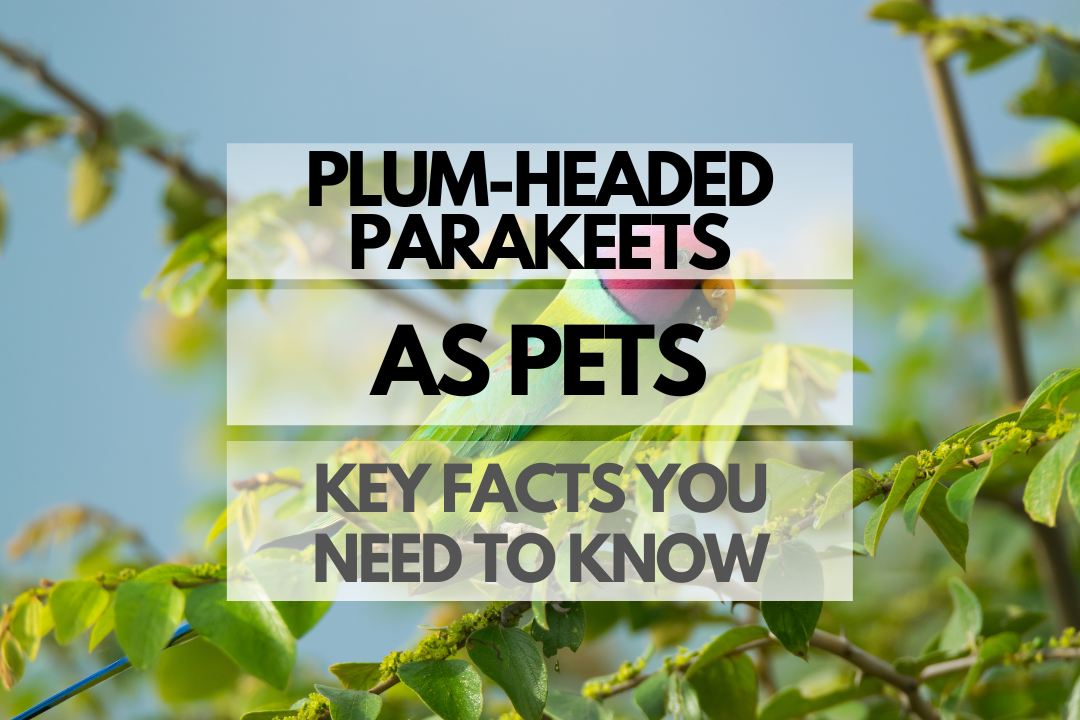Plum-headed Parakeets are stunningly beautiful birds with vibrant colors and playful personalities. If you’re considering adding one of these charming parrots to your family, this article will provide you with all the essential information you need to know about keeping Plum-headed Parakeets as pets.
Quick Reference Table: Plum-headed Parakeet Facts
| Scientific Name | Psittacula cyanocephala |
|---|---|
| Native Habitat | South Asia |
| Average Lifespan | 15 to 20 years |
| Size | 12 to 14 inches (30 to 35 cm) |
| Weight | 2.5 to 3.5 ounces (70 to 100 grams) |
| Color | Purple-headed with green body and red tail |
| Temperament | Intelligent, social, and playful |
Where Do Wild Plum-headed Parakeets Live?
Wild Plum-headed Parakeets are native to South Asia, particularly India, Nepal, Sri Lanka, and Bangladesh. They inhabit a range of habitats, including forests, wetlands, and open countryside. These birds are social in the wild and can often be found in large flocks, especially during the non-breeding season.
Plum-headed Parakeet Lifespan: How Long Do They Live as Pets?
With proper care, Plum-headed Parakeets can live for 15 to 20 years or even longer in captivity. Ensuring a balanced diet, a clean and spacious environment, and regular veterinary check-ups are essential to maintaining their health and longevity. As a pet owner, it’s crucial to understand the time commitment required to care for these birds throughout their lives.
Are Plum-headed Parakeets Good Pets?
Plum-headed Parakeets can make excellent pets for the right person. They are intelligent, social, and playful, making them entertaining and engaging companions. Their striking appearance also adds a touch of beauty and color to any home. However, they do require a dedicated owner who can provide the necessary time, attention, and care for their well-being.
Are Plum-headed Parakeets as Pets Good for Beginners?
While Plum-headed Parakeets are relatively easy-going and adaptable, they may not be the best choice for beginner bird owners due to their specific care requirements and social nature. It’s essential for prospective owners to thoroughly research their needs and be prepared to invest time and effort into their care.
Are Plum-headed Parakeets Easy to Care For?
Plum-headed Parakeets require consistent care and attention to thrive. They need a clean, spacious cage, a balanced diet, and regular social interaction. Additionally, they enjoy mental stimulation through toys and puzzles. While they’re not the most demanding pet bird, it’s essential to consider their needs and the necessary time commitment before adopting one.
Plum-headed Parakeet Pros and Cons
| Pros | Cons |
|---|---|
| Beautiful and colorful appearance | Can be noisy at times |
| Intelligent and playful | Requires consistent care and attention |
| Social and interactive | May not be suitable for beginners |
Plum-headed Parakeet Price and Costs
The price of a Plum-headed Parakeet can range from $300 to $1,000, depending on factors like age, color, and breeder reputation. Initial setup costs for a cage, toys, and accessories can range from $200 to $500. Ongoing expenses, such as food, vet care, and toys, should also be considered when budgeting for your new pet.
Where to Buy Plum-headed Parakeets
Plum-headed Parakeets can be purchased from reputable breeders, bird shows, or specialized pet stores. It’s essential to research potential sources carefully and choose a healthy, well-socialized bird from a breeder who prioritizes the animals’ welfare and proper care.Caring for Plum-headed Parakeets
Plum-headed Parakeet Food
A balanced diet is crucial for the health and well-being of your Plum-headed Parakeet. A mix of high-quality pellets, fresh fruits and vegetables, and a small amount of seeds and nuts should be provided daily. Always ensure clean, fresh water is available. It’s essential to avoid feeding them foods that can be harmful, such as avocado, chocolate, and caffeine.
Health and Common Issues
Plum-headed Parakeets can suffer from several health issues, including respiratory infections, psittacosis, and feather plucking. Regular veterinary check-ups and maintaining a clean environment can help prevent these problems. It’s essential to monitor your bird for any signs of illness and consult a veterinarian if you have concerns.
Signs of Healthy Plum-headed Parakeets
| Healthy Plum-headed Parakeet | Sick Plum-headed Parakeet |
|---|---|
| Bright, clear eyes | Discharge or swelling around the eyes |
| Smooth, well-groomed feathers | Ruffled, plucked, or dirty feathers |
| Active and alert | Lethargic or weak |
| Normal droppings | Abnormal droppings (e.g., diarrhea, blood, or unusual color) |
| Good appetite | Loss of appetite or weight loss |
Plum-headed Parakeets Pet Insurance
If you’re considering a Plum-headed Parakeet as a pet, it’s essential to think about pet insurance. These beautiful birds can be prone to certain health issues, and veterinary care can be expensive. Pet insurance can help cover the cost of routine check-ups, vaccinations, and medical treatments, giving you peace of mind and ensuring your feathered friend stays healthy and happy.
Personality and Behavior
Plum-headed Parakeets are known for their playful, energetic, and affectionate personalities. They are intelligent birds that enjoy socializing and interacting with their human companions. With proper socialization and training, these parakeets can become very tame and even learn to perform tricks. They are also relatively quiet birds compared to other parrot species, making them ideal for apartment living.
Are Plum-headed Parakeets Social?
Yes, Plum-headed Parakeets are incredibly social creatures. They thrive in environments where they can interact regularly with their human companions and other birds. These parakeets form strong bonds with their owners and enjoy spending time playing, cuddling, and exploring together. It’s crucial to provide your Plum-headed Parakeet with plenty of mental stimulation, as well as social interaction, to keep them happy and healthy.
Speech and Noise of Plum-headed Parakeets
While Plum-headed Parakeets are not known for their talking abilities, they can mimic some sounds and words if properly trained. They have a soft, melodic voice that is pleasant to listen to. These birds are relatively quiet compared to other parrot species, making them great for those living in apartments or other close quarters.
Similar Species to Plum-headed Parakeets
There are several parakeet species that share similarities with the Plum-headed Parakeet, such as the Rose-ringed Parakeet, the Indian Ringneck Parakeet, and the Alexandrine Parakeet. These birds have similar size, coloration, and personality traits, but each species has its unique characteristics that set them apart from one another.
Can Plum-headed Parakeets Live With Other Pets and Birds?
Plum-headed Parakeets can coexist with other bird species and pets, as long as proper introductions and supervision are provided. It’s essential to monitor their interactions, especially during the initial introduction phase, to ensure the safety and well-being of all pets involved. Make sure each pet has its own space and toys to prevent territorial behavior and aggression.
Are Plum-headed Parakeets Legal to Have as Pets?
In most areas, Plum-headed Parakeets are legal to have as pets. However, it’s essential to check your local laws and regulations before acquiring a Plum-headed Parakeet, as some regions may have restrictions on owning exotic birds. Always ensure you purchase your bird from a reputable breeder or rescue organization to confirm it was legally acquired.
Additional Resources
- Reddit – Parrots
- Facebook – Parrot Lovers Unite
- Parrots For Dummies by Nikki Moustaki
- Scientific Article – Plum-headed Parakeet Health
FAQ for Plum-headed Parakeets as Pets
Do Plum-headed Parakeets talk?
While Plum-headed Parakeets are not known for their talking abilities, they can mimic some sounds and words with proper training. Their voice is soft and melodic.
Are Plum-headed Parakeets suitable for families with young kids?
Plum-headed Parakeets can be suitable for families with young kids, as long as the children are taught how to handle and interact with the bird properly. Adult supervision is essential during interactions.
Can Plum-headed Parakeets be trained?
Yes, Plum-headed Parakeets can be trained to perform tricks and learn basic commands. They are intelligent birds that respond well to positive reinforcement training techniques.
How do I know what gender Plum-headed Parakeets are?
Plum-headed Parakeets exhibit sexual dimorphism, which means males and females have distinct physical differences. Males have a vibrant purple head, while females have a greyish-blue head. Additionally, males often have a black ring around their necks, which is absent in females.
What is the lifespan of a Plum-headed Parakeet?
With proper care, a healthy Plum-headed Parakeet can live for 15-20 years or more. Providing a balanced diet, a clean environment, and regular veterinary check-ups can help ensure your bird lives a long and happy life.
What type of cage do Plum-headed Parakeets need?
Plum-headed Parakeets require a spacious cage that allows them to stretch their wings and move around comfortably. The cage should include perches, toys, and a nesting area. Bar spacing should be no more than 1/2 inch to prevent the bird from getting its head stuck between the bars.

